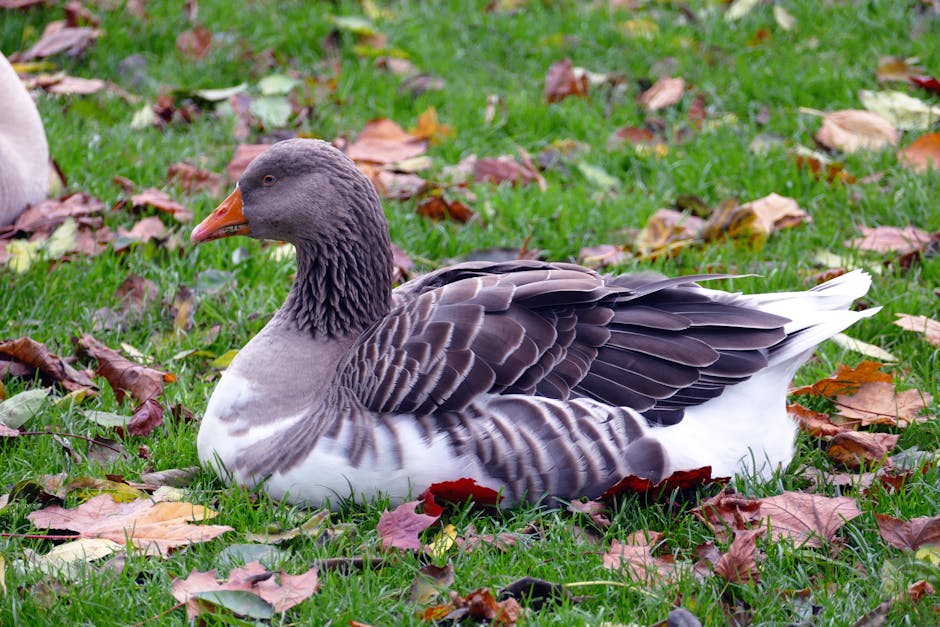Although birds may lack the distinct earflaps that we humans associate with ears, their auditory organs are ingeniously camouflaged within their feathered profile. Positioned on the sides of a bird’s head, typically slightly below eye level, these invisible ears are shrouded behind a layer of feathers. The opening towards the inner ear, which serves as a hearing canal, is remarkably small, reduced to a mere slit or hole to minimize wind resistance yet large enough to enable sophisticated hearing.
Here are some examples of bird species showcasing how ear-related features vary:
- The barn owl has an asymmetrical ear placement that may aid in pinpointing prey in the darkness.
- Parrots have conspicuous ear openings in contrast to other bird species—an indication of their social and vocal nature.
- In the king penguin, the visible auricular feathers form a slight curve, a clue to the hidden ear beneath.
Pro Tip: While observing a bird’s ear, it’s vital to avoid causing any discomfort or harm. Telescopes, binoculars, or a simple close-up photograph works best for a safe, unhindered observation.
Why Birds Ears are Not Easily Visible
Nature’s design for discreet bird ears is not a haphazard decision, but one forged from millions of years of evolution. In essence, visible ears would serve as a drag during flight, making the flight path less streamlined and efficient. Additionally, external ears could potentially get damaged or dirty, reducing a bird’s auditory abilities.
Comparing this unobtrusive avian design with the prominent ears of mammals, you’ll find stark disparities despite the shared purpose of the organs. While mammals use external ears for sound collection, birds rely more on precise ear placement and internal mechanisms for hearing.
Best Practice: As bird lovers, understanding and appreciating the unique architectural marvel of avian ears is essential. Remember, any alterations to a bird’s feathers around the ear (such as trimming or enhancing visibility) could cause unnecessary distress or harm.
The Structure and Function of a Bird’s Ear
A bird’s ear is a masterclass in design and function. Featuring three main sections— the outer ear (a simple hole), the middle ear (a single eardrum and three tiny bones), and the inner ear (which includes the cochlea for sound analysis)—these form an efficient auditory system. The absence of external ear parts corresponds to the streamlined body shape for optimal flight capabilities.
Pro Tip: For a more interactive learning experience, look for a cross-sectional diagram of a bird’s ear to comprehend the discussed components better.
Pros of the Avian Ear Design:
- Improved aerodynamics during flight
- Reduced risk of physical damage or infection
- High precision auditory capabilities
Cons of the Avian Ear Design:
- Lower ability to localize low-frequency sounds
- Difficulty distinguishing sounds amid background noise.
Birds’ Exceptional Hearing Abilities: Role of Hidden Ears
Apart from their striking colors, melodic songs, and swift flight, birds are also renowned for their keen sense of hearing. Contrary to what one may think, their ear’s stealthy design doesn’t compromise their auditory prowess. In fact, it enhances it.
Consider, for example, the incredible sharpness of an owl’s hearing. Thanks to its asymmetrically positioned ears, the barn owl can effectively distinguish the rustle of a mouse in a field from the backdrop of ambient night sounds.
Here are more examples of birds celebrated for their remarkable auditory skills:
- The American woodcock uses its auditory abilities for its intricate aerial mating dances.
- The marsh warbler, with its ability to mimic over 200 different bird songs accurately, pointing towards a talented ‘ear’ indeed.
- The greater prairie chicken uses low-frequency booming sounds during its courtship rituals, an auditory marvel appreciated by its female counterparts.
Fun Fact: In a study comparing bird hearing with human hearing, many bird species outperformed humans, especially in picking up high-frequency sounds.
Behavioral Patterns Linked to Bird’s Ears
The impressive hearing abilities of birds inform a variety of their behavioral patterns. From navigation strategies to mate selection and even predator evasion, hidden ears play a crucial role.
Take navigation, for example. Many bird species increasingly rely on auditory cues, especially the echo of their calls, to navigate in dense habitats. And when it comes to mating rituals, male birds often employ specialized sounds, which females interpret through their highly developed auditory systems. Additionally, hearing aids prey detection, crucial for predator birds and those with nocturnal lifestyles.
Some fascinating species-specific behaviors related to hearing include:
- The Northern Mockingbirds imitate the sounds of their environment -antiphonal singing, where numerous birds follow a leader’s song in rapid succession.
- Sonar use in Oilbirds, who emit clicking sounds at frequencies humans can hear and use the echoes to navigate in complete darkness.
Observation Checklist for Bird Enthusiasts:
- Watch bird interactions during mating season. Listen to specific mating calls and observe the subsequent responses.
- On night walks, listen to birds navigating. Note the echoing calls of nocturnal species.
- Observe birds in their hunting routines, noting any auditory cues they use for prey detection.
Key Takeaway:
- Bird’s ears are ingeniously hidden within their feathers, generally located on the sides of their head below eye level, for evolutionary advantages like streamlined flight and reduced risk of physical damage.
- There are variations in the ear-related features across different bird species, which aid in different functions like prey detection and communication.
- Birds compensate for the absence of external ears with a highly precision-based auditory mechanism, making their hearing abilities exceptional.
- Bird’s ears play a crucial role in their behavioral patterns such as navigation, mating rituals, and prey detection.
Rest assured, while bird ears may not be readily visible to the human eye, they are powerful, efficient, and play a huge role in birds’ survival and behavior. It is thrilling to observe and learn from the perfection of nature’s design. Keep observing, keep learning, and foster a deeper appreciation for nature’s marvels.
FAQs
Q: Why do some birds have exposed ear openings while others do not?
A: This could be related to the specific listening requirements of each species. For example, social and vocal birds like parrots have more exposed ears to pick up sounds more effectively.
Q: Why are birds better at detecting high-frequency sounds compared to humans?
A: Birds’ superior detection of high-frequency sounds is related to their adaptations for survival. They need to be alert to high-frequency sounds to detect threats or communicate effectively.
Q: Can all birds hear equally well?
A: Not necessarily. Just as vision varies among bird species, hearing abilities may also differ. For example, owls are known to have particularly sharp hearing to aid night hunting.
Q: Could hearing abilities of birds change with age?
A: Just like in humans, hearing sharpness in birds may decrease with age. However, more specific studies are needed to understand this aspect thoroughly.
Q: What can I do if I see a bird with damaged feathers around its ear area?
A: If you notice a bird with damaged feathers around its ear, contact a local bird rescue or wildlife rehabilitator. Never try to catch or treat the bird yourself as it could cause more harm.
We hope this article piqued your interest in bird anatomy and hearing abilities. If you found it informative, feel free to share it with others. Stay tuned for more insightful articles on our website!












